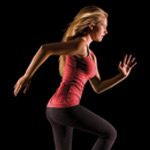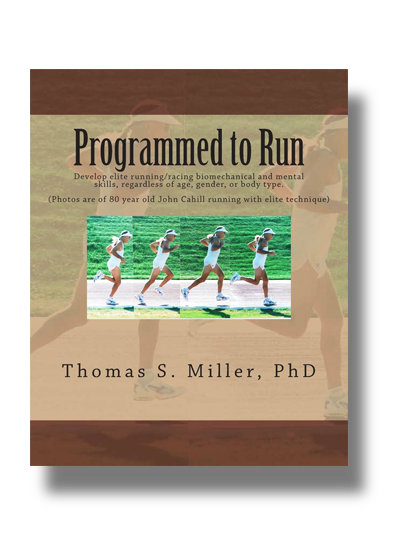How Will Improving My Running Technique Impact My Running?
As told to Breanne George by Thomas Miller, Ph.D. for active.com
Improving your running technique even a fraction of a percent per stride can have a huge effect on your ability to run faster/longer, recover faster, have fewer injuries, and enjoy your running even more. Think about how many thousands of strides you take while you run. Small steps to improve your form can have a tremendous influence on your performance. I suggest rather than changing your technique, work on refining your biomechanical running skills.
If you frequently experience over-use injuries, which are almost always technique-related, I would start today to modify how you run. However, if you never experience running injuries, I suggest you work on a quicker turnover. I literally wrote the book on how to run, Programmed to Run, but this summer embarked on a serious program to improve my running–primarily targeting my posture and running with a quicker turnover. In the last couple months, I ran three half marathons more than 10 minutes faster than I have in 10 years. Focus on the process and the running will take care of itself.
What Does Proper Running Form Look Like?
If you consider distance running (not sprinting) a momentum sport where the idea is to maintain a desired velocity over a period of time or distance, then your running technique should enhance your ability to maintain that momentum. Now consider the fluid grace of an elite runner–especially the Kenyans and Ethiopians. Their shoulders are always slightly forward of their hips, while the natural curvature of the spine is balanced over their pelvises, which are tilted forward.
Stand up and shift your shoulders somewhat forward of your hips and what do you sense? Gravity pulls you forward without any effort on your part. Now raise your hands up to touch the bottom side of your ribcage, with your thumbs touching your side near heart height. You will feel your shoulders tilt forward, urging your body to move ahead–again with minimal effort. As demonstrated, a balanced-forward posture utilizes gravity to extend your forward momentum with each stride.
There is no debate whether heel or mid-foot initial contact is more efficient. I have never observed a world-class distance runner sustain a heel foot strike for more than a stride or so, and that is usually at the start of a downhill. Stand up again and step forward making contact with your heel. Take a look at your leg: It has to be straight. So how is the impact of contact to be absorbed? The answer is up through your skeleton. Now start to back your leading foot up until it feels stable. I bet that your ankle, knee and hip are slightly flexed and your foot is under your center of gravity. If you were to contact the ground in this configuration, where would the shock go? It would be absorbed in the muscles and tendons that are stretched across these joints and would be stored as elastic energy.
This energy can be released through your toes and supplement your push off as you bound lightly forward. The graceful, fluid strides of elite runners fit this description. They land lightly on their mid-foot, settling soft onto their whole foot under slightly bent knees and with flexing ankles and hips. They have a balanced forward posture, including some shoulder and pelvic tilting during compact arm swings and light, quick leg turnover. The overall effect is floating over the ground rather than pounding along on top of it.
What is the Best Way to Analyze My Form?
First, you must have a clear picture of what perfect running form looks like. Study world-class runners and see if my previous description is accurate. Your body will respond to an image in your mind. I think the best thing you can do is see yourself running. I’ve worked with athletes for months to adjust their running form. When they watch themselves running via video, they finally see what they’re doing wrong. It’s very important to see yourself running in order to match the image of how you think you run with how you actually run. I used to run around in shopping centers to see my reflections in store-front windows. Now there are myriad choices of video to utilize. Ask a friend or running partner to shoot video of you running and have a coach evaluate your form. Seek out a coach online or locally who is knowledgeable about running skills (biomechanics), not just training methods. Have them analyze and critique your form.
What Are Some Simple Drills I Can Do to Improve My Running Technique?
One of the best drills you can do is to take your shoes off and run barefoot on a track or even around your house. I’ve done quite a few running clinics where I’ve asked people to run with their shoes on and then with their shoes off. Once they started running barefoot, their running form changes. Running barefoot allows you to feel exactly what is happening to your feet as you run.
Another drill is to focus on your posture. Runners are told to run upright, which people interpret as standing up straight. But when you stand up, all of your joints are perfectly aligned. Running with your shoulders forward allows the curvature of your spine to be natural. Keep your hands close to your body, elbows back and chest forward. Also, practice running with a quick and right step. One of the most important attributes of a runner is a quick turn-over and light foot contact with the ground. Like athletes in all other sports, constantly refining and adjusting your technique is a lifetime pursuit.


